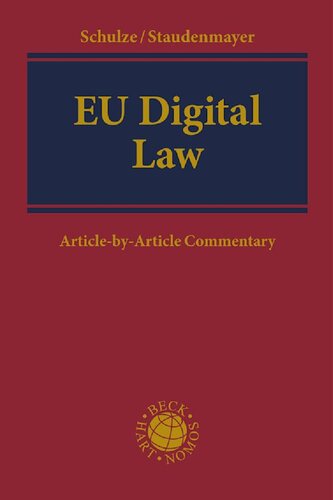

Most ebook files are in PDF format, so you can easily read them using various software such as Foxit Reader or directly on the Google Chrome browser.
Some ebook files are released by publishers in other formats such as .awz, .mobi, .epub, .fb2, etc. You may need to install specific software to read these formats on mobile/PC, such as Calibre.
Please read the tutorial at this link: https://ebookbell.com/faq
We offer FREE conversion to the popular formats you request; however, this may take some time. Therefore, right after payment, please email us, and we will try to provide the service as quickly as possible.
For some exceptional file formats or broken links (if any), please refrain from opening any disputes. Instead, email us first, and we will try to assist within a maximum of 6 hours.
EbookBell Team

4.1
40 reviewsThe European Commission adopted its Digital Single Market Strategy in May 2015. Three years later, legislative measures are emerging which aim to tackle the unique legal problems arising from the supply of digital content and which will shape the development of national and European law in the future. The Digital Content Directive is set to play a central rule in this development. Its provisions on conformity and remedies for non-conforming digital content concern the heart of the protection for the consumer. Its rules will not only have to be transposed into national law over the coming years but will also interact with existing provisions from the Consumer Rights Directive 2011/83/EU, the E-Commerce Directive 2000/31/EU, and the Portability Regulation 2017/1128 in order for the legal framework on the supply of digital content to function.
The Commentary contains an in-depth, article-by-article analysis of core provisions concerning the supply of digital content: from the pre-contractual information duties and cancellation rights to conformity and portability of digital content. The contributors are legal experts from across the EU. Their comments give not only detailed explanations of the background and purpose of the provisions in order to assist interpretation, but also indicate potential difficulties and solutions in order to ease transposition and implementation of the rules on the supply of digital content. It will be an essential guide for legislators, practitioners and scholars.